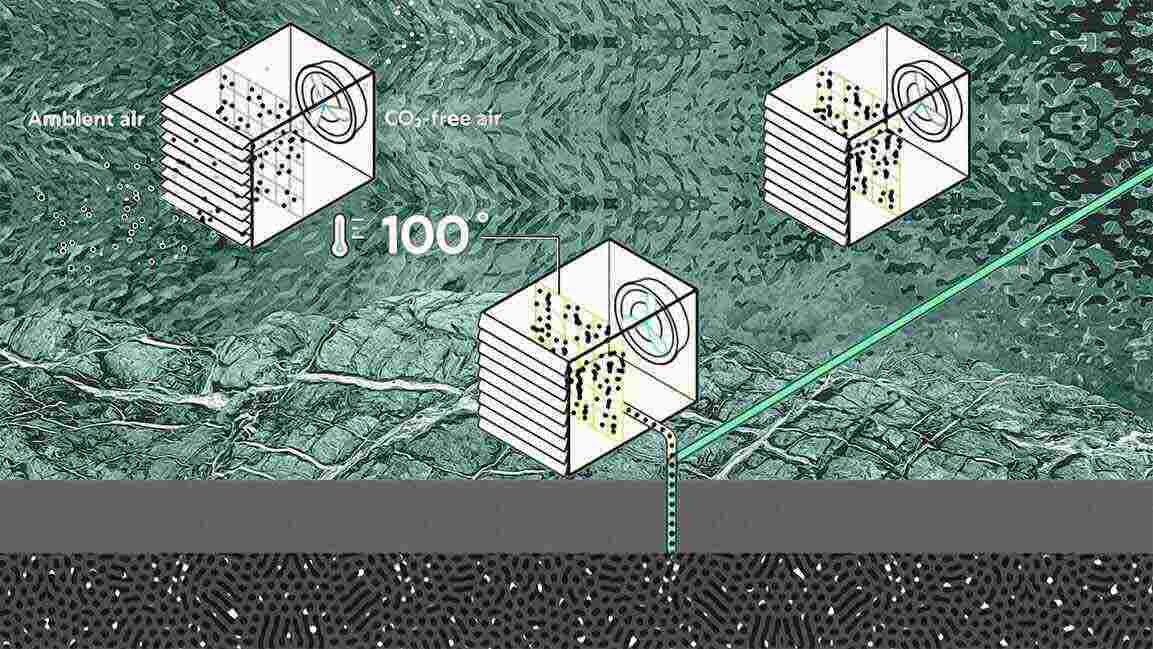- | 9:00 am
This Oman-based startup turns carbon into solid rock — and does it super fast
Unlike many forms of storage, where carbon could potentially escape back into the atmosphere, 44.01 eliminates carbon permanently by turning it into rock.

Of all the countries in the Middle East that you might expect to host a startup that is advancing in the storage of carbon dioxide — and thus, keeping it out of the atmosphere — Oman probably isn’t the first you’d pick.
That’s simply because, compared with places like the UAE and Saudi Arabia, the country has just started actively building an innovation community.
But global warming poses critical risks to Oman, a country on three oceans, and records the highest ever minimum temperature. In 2021, cyclone Shaheen – the tropical storm — tore through the country.
Three years ago, climate change’s impact in Oman prompted a startup called 44.01 to pioneer a new business model: mineralization technology to remove carbon dioxide from the atmosphere.
“From increased cyclones to the presence of a huge ocean ‘dead-zone’ off the coast, it was clear that excess carbon dioxide in the atmosphere is already affecting Oman and our way of life,” says Ehab Tasfai, co-founder and CTO of 44.01. The company is named after the molecular mass of carbon dioxide.
“We were interested in how technology can remove carbon from the atmosphere, but we kept coming up against the same question – what can you do with the carbon dioxide once it’s been captured?”
MINERALIZING CARBON
Too many existing solutions were temporary or needed to be more scalable. Fortunately, Oman’s rocks offered an answer.
“We have an abundance of a rock called peridotite in Oman, which has been naturally mineralizing carbon dioxide (or turning it into rock) for millennia. Our challenge was to speed up that process to enable permanent carbon removal at the scale required to help fix our climate,” says Tasfai.
It’s not the first time anyone has tried to store excess carbon underground, but this case has an added twist. The carbon wasn’t to be preserved in a gaseous or fluid form such that it might someday escape back into the air. Instead, it would be dissolved in large volumes of water and then injected deep underground into peridotite formations.
“By dissolving carbon at high concentration and adjusting variables like pressure and temperature, we can speed up the reaction over 100,000 times, enabling us to mineralize carbon in less than 12 months,” says Tasfai.
Mineral sequestration underground is only useful if it happens on a human time scale. If it takes 5,000 years, as it might in silicate formations, there is not much of an advantage to forming minerals.
But unlike many forms of storage, where carbon could escape back into the atmosphere, mineralization eliminates carbon by turning it into rock.
“Early-stage technologies like ours come down in cost as they scale, and we anticipate we will be cost-comparable with traditional carbon sequestration technologies as we scale up,” says Tasfai.
“But we are only one part of the carbon removal chain. Carbon capture technology is required before the carbon can be mineralized, and we also expect the cost of those technologies to come down over the coming years.”
WORKING ON BIG PROJECTS
Next year, the startup, which won the Earthshot Prize and an XPrize Milestone Award in 2022, aims to build the world’s first commercial-scale peridotite mineralization project in Oman.
Initially, the startup injected very small amounts of carbon at its initial pilot site in Oman. The pilot demonstrated that the process worked, mineralization occurred rapidly, and there was no adverse impact on the environment.
44.01 has partnered with ADNOC and has begun a pilot project in Fujairah that will be the world’s largest peridotite mineralisation project so far, and the first to use seawater to inject CO2. This project will open the possibility of mineralizing billions of tons of captured carbon across the region.
“Our ambition now is to keep increasing the amounts we inject, which we will be doing across our next projects in Fujairah, UAE, and the Hajar mountains in Oman,” says Tasfai.
There are three main carbon capture, use, and storage projects in the Middle East — in Saudi Arabia, Qatar, and the UAE — that account for about 10% of the 40 million tonnes of carbon dioxide captured globally.
HUGE POTENTIAL
By 2030, Qatar targets seven million tonnes per year and the UAE five million tonnes; Saudi Arabia aims to reach 44 million tonnes by 2035. As a center of the hydrocarbon industry, it is essential for its energy industry to be as low-carbon as possible to maintain its competitive position.
“The region can become a hub for the new carbon removal economy. We have everything carbon removal requires here – renewable energy, rocks like peridotite that can mineralize carbon, and lots of relevant expertise, services, and equipment from oil & gas,” says Tasfai.
While the US and EU are using incentives and regulations to encourage green-tech companies to enter their markets, Tasfai says, although it’s been getting support from the government of Oman and ADNOC in the UAE, “there is an opportunity for governments across our region to come up with innovative ways of boosting this developing industry.”
There’s a massive potential in this space – carbon storage is a critical piece of the global initiative to reduce carbon dioxide emissions and realization of ambitious net-zero goals of many countries in the region.
“The science on climate change is clear. We need to cut emissions rapidly and drastically, but we also need to start capturing historic atmospheric emissions. By 2050, the world must capture as much as fifteen billion tonnes of CO2 every year, and we’re nowhere near that. This is obviously a huge challenge, but it’s also a massive opportunity for the region to develop new technologies, jobs, and investment,” says Tasfai.








































